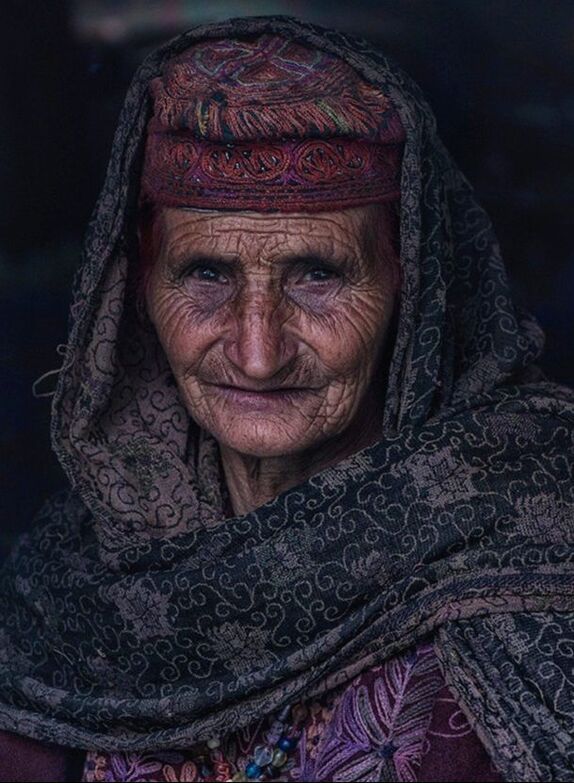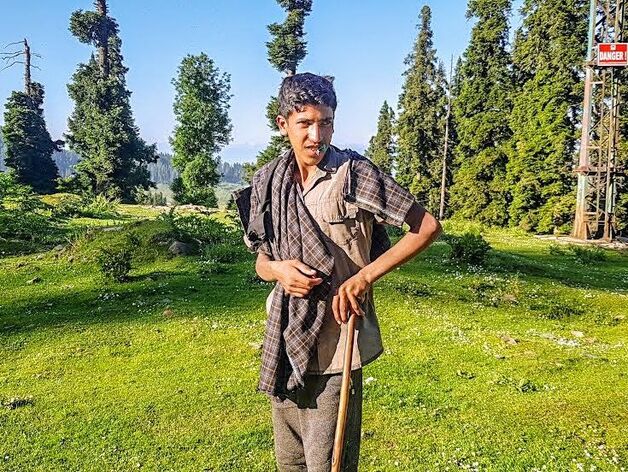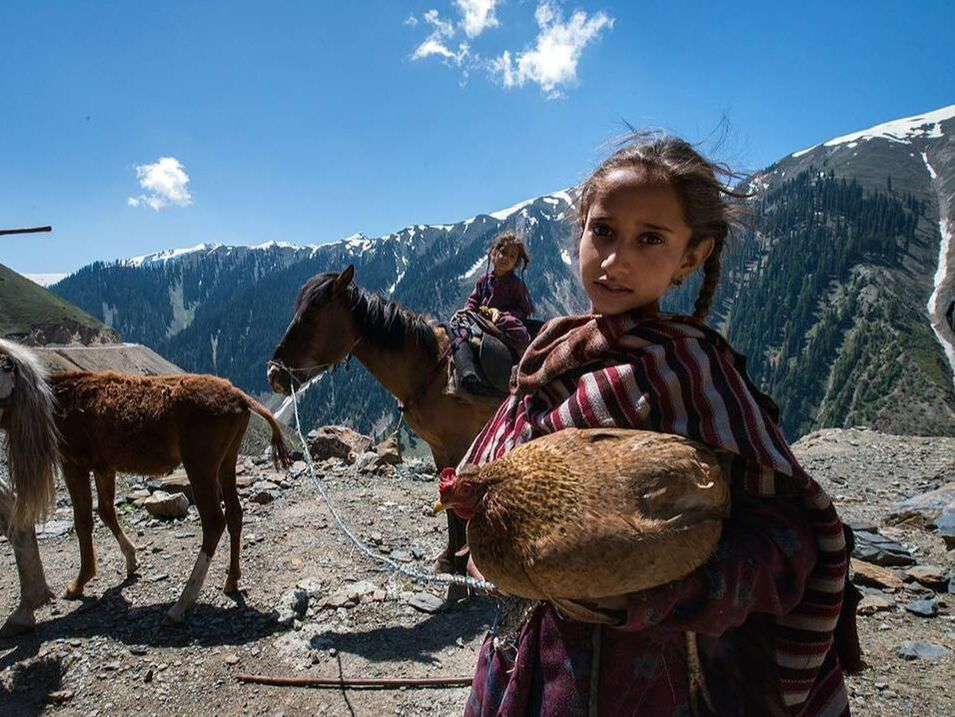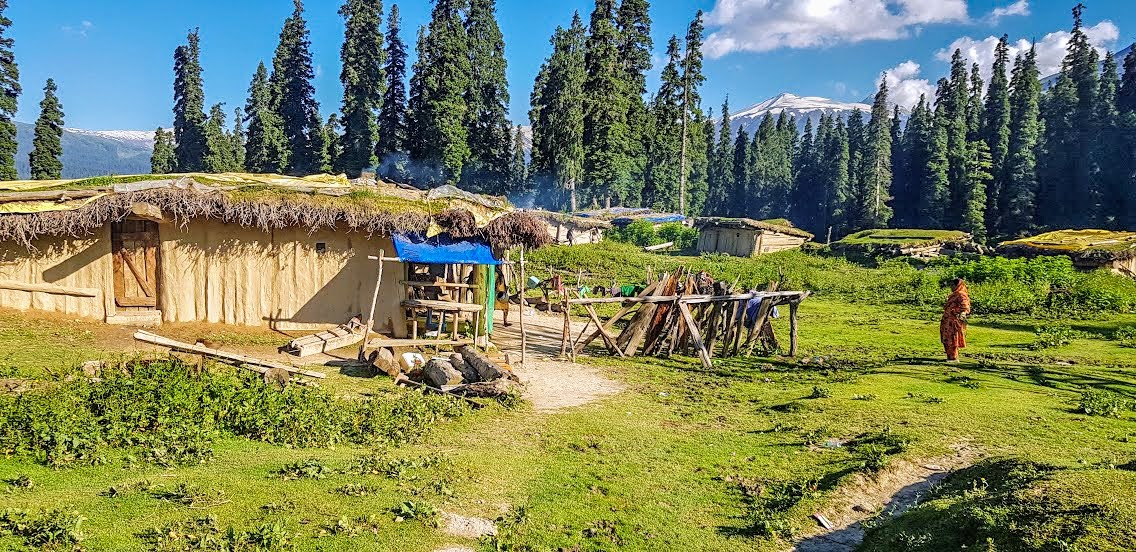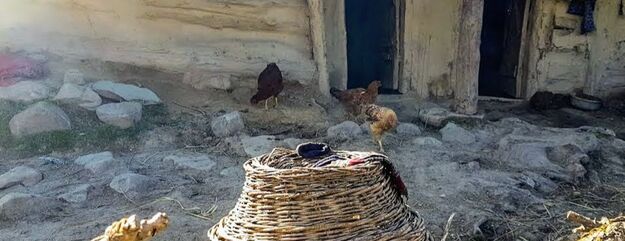Understanding the Culture : Nomadic Lifestyle of the Bakerwals and Gujjars of Jammu and Kashmir
By
Malvika Sharma
Scheduled Tribes in Jammu and Kashmir
Jammu and Kashmir has twelve notified communities as the Schedules-Tribes. Eight communities, that is, Balti, Beda, Bot, Brookpa, Changpa, Garra, Mon, and Purigpa, among them were given this status in 1989, and Bakerwals, Gujjars, Gaddis and Sippis were notified as the scheduled tribes under the constitution Scheduled Tribes Amendment Act, 1991. All the twelve scheduled tribes were enumerated officially for the first time during the census 2001, recording the population of 1,105,979. Out of these 12 scheduled tribes, Gujjar is the most populous tribe having a population of 763,806, thus forming 69.1 percent of the total ST population. Bot is the second major tribe having a population of 96, 698, followed by Bakerwal (60,724) and Brokpa (51,957).
~ Census2001
~ Census2001
Shepherds of Jammu and Kashmir
Credit : Sankar Sridhar
Shepherds of Jammu and Kashmir |
Bakerwals and Gujjars: Shepherds of Jammu and Kashmir
These are sheep and goat rearing tribals who practice transhumance thereby referred to as the tribals always on the move. They move across high-altitude mountain passes and traverse through different ranges of the Himalayas from alpine pastures (margs) to lower Siwalik ranges near Jammu plains to Greater-Himalayas of the Kashmir Valley. They halt and take shelter in dhoks and margs which are identified temporary shelters in the meadows and forests, along the tracts and trails that the community tread upon. The term “Bakarwal” is derived from the combination of two Gojri/Urdu/Punjabi/Dogri terms ‘Bakri’ meaning goat/sheep and ‘wal’ meaning ‘one who takes care of’ implying high-altitude goat and sheepherders. The tribe is also known as ‘Dhanger’ in several parts of India. Bakerwals are stretched out in all the three regions; Jammu, Kashmir, and Ladakh.
 Bakerwals taking their herd to the margs/ alpine pasture. A flock can be as large as a thousand sheep controlled by a group of Bakerwals who migrate and walk these greater distances as ‘a group’, thereby sticking together and usually belonging to the same sub-clan with a specific clan-name.It also shows how Bakerwals communicate and direct their herds through the whistles
Bakerwals taking their herd to the margs/ alpine pasture. A flock can be as large as a thousand sheep controlled by a group of Bakerwals who migrate and walk these greater distances as ‘a group’, thereby sticking together and usually belonging to the same sub-clan with a specific clan-name.It also shows how Bakerwals communicate and direct their herds through the whistles
The Gujjars can be divided into three principle groups according to their major lifestyle changes, mode of existence, and occupational pattern: The first group comprises the sedentary or settled Gujjars who now cultivate land as their primary occupation and live in permanent villages in the plains bordering the foothills. The second group consists of the semi-settled Gujjars. These Gujjars combine the cultivation of land with pastoralism in varying degrees. They are settled permanently in the lower mountain areas where they engage in cultivation but move during the summer season to the middle mountains and Pir-Panjal pastures. The third group comprises the transhumant Gujjars who are wholly pastoral nomads and oscillate between winter and summer pastures.
Gujjar men typically wear Pagh /Qameiz and Tehmad while their womenfolk wear Shirt with strips Choridar shalwar and Jotti. The traditional sports played by Gujjars are Budger (Stone/weight lifting), Beeni Panjo (Arm Holding), Chhing (Wrestling), Chhito, Panjhgeet, Khinu (Ball), Horse racing as well as animal fights (Read it here) . The Gujjar and Bakerwals have unique traditions of musical practices. The folk instruments are typically made of wood, animal skins, clay, metal, or other material. The popular folk instruments used by nomadic Bakerwal and Gujjar are Jodhi /Do nall, Banjli, Bisli, Chuhung, Yaktaro, Dhol, Sharnai, Chimtoo, Saargi, and Ghadhoo/Ghodholi. (Read it here)
Gujjar men typically wear Pagh /Qameiz and Tehmad while their womenfolk wear Shirt with strips Choridar shalwar and Jotti. The traditional sports played by Gujjars are Budger (Stone/weight lifting), Beeni Panjo (Arm Holding), Chhing (Wrestling), Chhito, Panjhgeet, Khinu (Ball), Horse racing as well as animal fights (Read it here) . The Gujjar and Bakerwals have unique traditions of musical practices. The folk instruments are typically made of wood, animal skins, clay, metal, or other material. The popular folk instruments used by nomadic Bakerwal and Gujjar are Jodhi /Do nall, Banjli, Bisli, Chuhung, Yaktaro, Dhol, Sharnai, Chimtoo, Saargi, and Ghadhoo/Ghodholi. (Read it here)
On the Move : Cost of Nomadism
The prospects of health and education remain poor among these tribals with many government affirmative actions trying to pull the community out of poor socio-economic conditions. An interesting programme in the form of ‘mobile-schools’ has been run by the government where the school travels along with the tribals for six-months in order to ensure proper education to children among the Bakerwal and Gujjar tribes. However, due to mobility and logistical challenges, the programme outreach is minimum and many such schools have become stationary or have disappeared altogether. This report highlights the status of such schools in the present scenario. The need to innovate and implement new ideas that can provide a boost to the education prospects among tribals is thus the need of the hour. Ideas that can make innovations such as mobile schools a transparent and accountable everyday exercise, thus creating stable institutions out of them is required.
Video Credit : The Wire
Health prospects remain weak due to their migration along far-flung pastures that remain inaccessible to any sort of health outreach. In the vulnerable health group category are not just expecting women and children, but the livestock and cattle that tread along with the tribals through some of the most difficult trails with severe climatic conditions. This article wonderfully captures the ethno-veterinary practices that the tribals use for dealing with any health care during their transhumance practices. The practices are rooted in their ethnohistory and speak volumes about ancient traditions of health and medicine. However, ethnomedicinal knowledge is not always equipped to deal with the new age diseases, therefore the need for the hour is to implement policies that shall work for providing mobile dispensaries along with mobile schools to protect the culture and its practice among these tribals. The practice of seasonal transhumance has already been threatened due to spike in the rate of tribal families who are settling down in search of good education and health opportunities, which is a threat to the culture that the tribe has kept alive for generations. If education and health can be provided at their doorsteps, the chances of families opting out of shifting and migration would lessen, thereby encouraging these diverse cultural practices.
Caught in Between
The tribals have been losing a lot of their pasture lands because of ongoing conflict and the threat of infiltration and terrorism that the region has been facing for decades. The recent changes in the Forest Rights Act post abrogation of article-370 in Jammu and Kashmir have provided them with rights over forest lands that they use as pastures during the practice of transhumance with minimal threats of untimely eviction, but the rights are yet to be implemented in letter and spirit. The tribes have been one of the worst sufferers of terrorist sponsored activities in the region and thus many times had to change their seasonal routes, postpone their migration in wake of a perceptible threat, etc. However, they also have been helping security forces in their own peculiar ways in wiping out terrorism from the erstwhile state.
The sedentary settled Gujjar community who reside in the frontier border zones face cease-fire violations on an everyday basis. This account narrates their first-hand experience of living in such volatile and inhospitable zones where they survive each day at a time. Even Gujjars who are residing near the border-zones have been losing access to their lands that have been caught up between surveillance structures at these fronts. The tribes are thus struggling to keep their traditions and culture alive in the zones of conflict. In such a scenario, both public and government outreach can help them sustain their culture along with spreading awareness about the richness and importance of preserving our tribes.
The sedentary settled Gujjar community who reside in the frontier border zones face cease-fire violations on an everyday basis. This account narrates their first-hand experience of living in such volatile and inhospitable zones where they survive each day at a time. Even Gujjars who are residing near the border-zones have been losing access to their lands that have been caught up between surveillance structures at these fronts. The tribes are thus struggling to keep their traditions and culture alive in the zones of conflict. In such a scenario, both public and government outreach can help them sustain their culture along with spreading awareness about the richness and importance of preserving our tribes.
The seasonal migration depends heavily upon these makeshift structures and shelters. During the summer months, these mud-huts serve as their home, and lie deserted and completely buried under ten-fifteen feet snow in winters. A large part of their economy depends upon cattle produce and horse keeping. However, a majority of their cattle products and subsistence-cultivation produce is used for self-consumption and everyday use. Tourist places like Gulmarg, Pahalgam in Jammu and Kashmir see Gujjars and Bakerwals flocking in their proximity because of the seasonal occupational opportunities where they make use of their labor and animals such as horses in ferrying tourists to famous destinations.
Temporary Shelters During Summer Months
Visually Yours : The Bakerwals and their "Bait"
Two documentaries that have captured the seasonal migration of Bakerwals and Gujjars beautifully are The Bakerwals by Rajesh Kaul and The Shepherds of Paradise by Raja Shabir Khan won the national award for the best non-feature film in 2012. The Shepherds of Paradise have captured various socio-economic and cultural aspects of the tribals community by walking along with the tribals along the treacherous Himalayan terrains. The film has vividly captured the difficulties that the community face while on the move. It also emphasizes the importance of ‘culture’ that holds the community together and pushes them to practice transhumance as a cultural inheritance and heritage. In Kaul’s Bakerwals, one can get a glimpse of another important cultural aspect of the community which is ‘Bait’, the music of the community, a mix of folklore in the form of songs of love, life, mysticism, ethic and cultural values, etc. The beautiful baits playing in the backdrop of the everyday social practices of the community make this documentary a worth watch in the larger understanding of the nomadic culture of Bakerwals and Gujjars. This documentary also is a beautiful attempt to both foreground and preserve the dying culture of Baits, especially in the overwhelming digital age we live in where folksongs and regional folk culture is continuously under threat. In third video, Javaid Rahi, a Gojri culture activist, and preservationist talks about the nuances of Bait with a famous Bait folksinger Mohd. Shabir.
Credit :Raja Shabir Khan
|
Credits : Captain Rajesh Kaul
|
Credits: Dr.Javaid Rahi
|
Important Readings
- Verma, V.R., Gandhi, S. & Dash, U. Traversing the margins: Access to healthcare by Bakarwals in remote and conflict-prone Himalayan regions of Jammu and Kashmir. Pastoralism 9, 2 (2019). (Read it here)
- Bhasin, V. Pastoralists of Himalayas. Journal of Biodiversity 4 (2): 83–113 (2013). (Read it here)
- Khatana, R.P. 1992. Tribal migration in Himalayan frontiers: Study of Gujjar Bakarwal transhumance economy. Gurgaon: Vintage Books.
- Further reading and resources for Gojri literature and Gojri Songs
Acknowledgment : Author and SOH is thankful to Raja Shabir Khan, Captain Kaul , Dr.Javaid Rahi and Sankar Sridhar for generously allowing us to embed their documentaries and images in this article. Credit to The Wire for the video - High Altitude Schools for Bakarwal Children.
|
11-07-2020
|
Explore I Share
|
Malvika Sharma
|
Malvika Sharma is a PhD Research Fellow at Jawaharlal Nehru University, New Delhi. She works in the field of Borderland-Studies, with a special focus on the Himalayan Borderlands in Jammu and Kashmir. Image Credits : Sankar Sridhar (Shepherds of Jammu and Kashmir, Both portrait of Elders and Long marches..), Malvika Sharma (All others)
|

